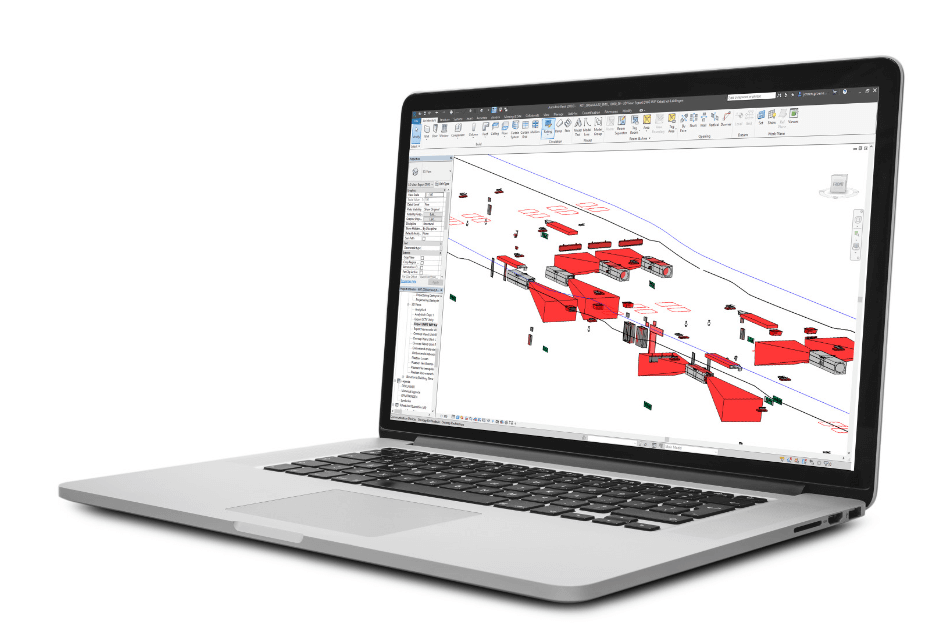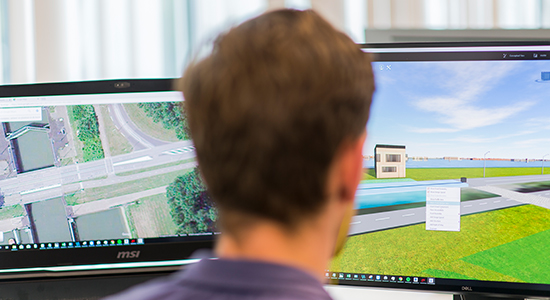Digital Engineering & Services
Infranea engineers have been using advanced software to digitise design data for years. In a constantly changing world characterised by an economy revolving around information technology, we see an exponential growth in the amount of digital information. Within the infrastructure market, we thereby see the evolution from computer-aided to computer-driven design. This offers enormous opportunities in terms of Digital Engineering & Services, allowing benefits such as more quality, more productivity and more integrality. Besides Building Information Management (BIM), Geographic Information Systems (GIS), we also provide specialised and innovative services in the field of Computational Design, Virtual Reality Simulations and Digital Twins. We also provide all kinds of services and digital solutions to help our customers with their digital transformation.
Computational Design
Parametric Design’ and ‘Generative Design’ are two examples of Computational Design. In the first method, all assumptions, design rules, variables and decisions are translated into a script or algorithm. In the second, a self-learning mathematical algorithm mimics nature to explore all possible design solutions as a function of goals, constraints and selection criteria.
Digital Twins
‘Digital Twins’ are digital replicas of the designed or built project where the BIM model is translated into a Virtual Reality model. These virtual models are ideal for performing all kinds of simulations, validations and training by integrating the VR environment with the operational control systems of, for instance, a tunnel, lock or bridge. By linking e.g. sensor data (IoT), one obtains a living model for management and maintenance.







